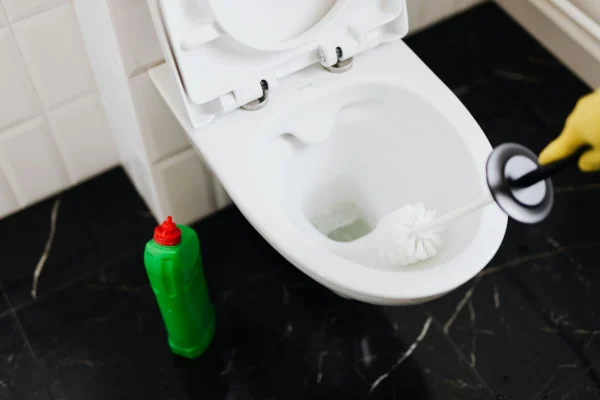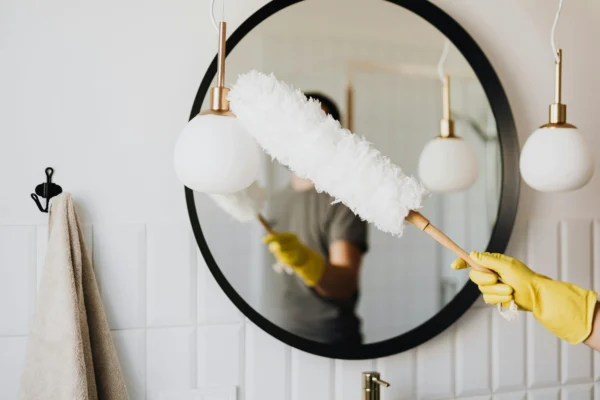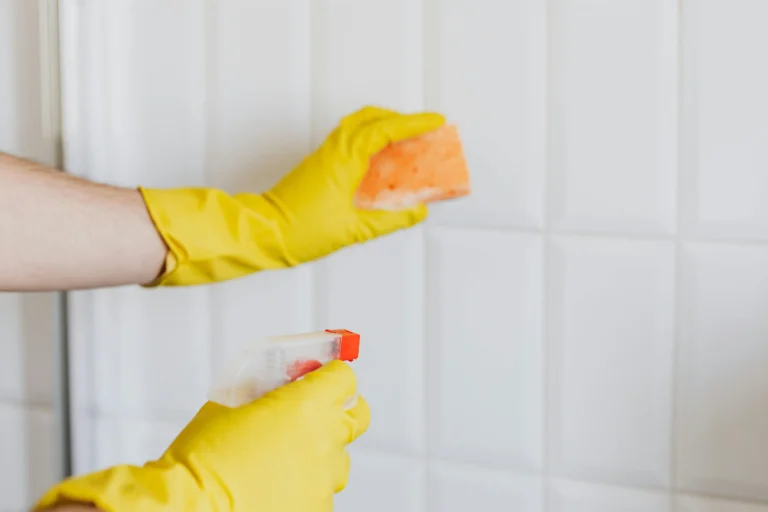If you’re raising a toddler, you already know the bathroom can turn into a minefield of messes and mishaps. From slippery floors to sharp corners, it’s a place that demands special attention. Keeping your bathroom clean and safe isn’t just about scrubbing surfaces—it’s about building smart habits and using the right tools to keep things tidy and child-proofed. And yes, it’s also a great way to support your goal of how to keep home clutter-free.
So, how do you keep your bathroom both clean and toddler-safe? Here’s a straightforward, no-fluff guide with tips you can put into action right away.
Get Organized (and Keep It That Way)
Toddlers are naturally curious, which means anything within arm’s reach is fair game. Start by using labeled bins for your child’s bath toys and toiletries. Install shelves or baskets to keep the floor clear—fewer tripping hazards, and way easier to clean your bathroom properly.
Toss wet towels in a designated laundry bin right after use. Not only do they contribute to mildew buildup, but they can also cause slips. Make sure fresh towels are stored within reach but off the ground. Use a microfiber cloth for a quick wipe on surfaces daily—this keeps grime and dust from accumulating and helps maintain a sparkling clean vibe throughout the day.
Choose Cleaning Products That Are Safe but Effective

Strong chemicals may clean dirt and tough stains, but they’re not always safe for little ones. Instead, look for child-safe alternatives like baking soda mixed with distilled white vinegar—it’s great on grout lines and shower walls. For everyday messes, an all purpose cleaner (check the label for non-toxic and pet-safe options) can go a long way.
Cleaning bathroom areas like the sink and tile and grout regularly prevents soap scum buildup. A spray bottle filled with warm water and a few drops of dish soap is great for quick cleanups. You can use it when cleaning the kitchen, too. For deeper cleans, bar keeper’s friend or other non-abrasive cleaners can safely tackle stubborn grime without damage surfaces.
Equip the Bathroom with Safety Features
Let’s talk basics. Every toddler-friendly bathroom should include:
- Non-slip mats both inside and outside the shower or tub.
- A toilet seat lock to prevent unwanted experiments.
- Childproof faucet handles and soft faucet covers to prevent bumps.
- Covered toilet paper rolls to keep them from unraveling into chaos.
If you have glass shower doors, keep them spotless with a streak free glass cleaner, and check that they are secure. Use a damp cloth on light fixtures and door knobs, which often get missed during the cleaning process but are full of germs.
Master the Cleaning Process with the Right Tools

As a busy parent, you need to find ways to finish the cleaning job faster. The trick? Invest in the tools that work hard for you. A small scrub brush is perfect for scrubbing sinks and tackling the toilet hinges. Keep a stash of scrub brushes for tile and other surfaces that collect buildup.
When you deep clean, focus on the toilet bowl, shower head, and sink area. A dedicated toilet bowl cleaner and toilet brush combo makes it easy to clean the toilet thoroughly. Let it sit for a few minutes, then scrub away for that sparkling clean finish. While you’re at it, give the toilet paper holder a once-over—it’s a common dust magnet.
For washing shower curtains, toss fabric ones in the machine with some baking soda and vinegar. If you’re working with plastic liners, scrub them with soapy water and a microfiber cloth to remove mold or soap scum.
Keep Air and Light Moving
A bathroom without ventilation can quickly become a breeding ground for mold. Use the vent fan during and after baths to keep humidity down. Open a window when possible. Clean the fan blades and light fixtures regularly with a lint free material or microfiber cloth to ensure they’re working properly and not just blowing dust around.
Build Safety into Your Toddler’s Routine
You’re not just cleaning the space—you’re teaching habits. Get your toddler involved in age-appropriate cleaning tasks like handing you the disinfectant wipe or putting toys in the bin. Show them where the toilet paper belongs and explain why the toilet brush is off-limits.
Create a rhythm: rinse the shower after each use, use a quick wipe on the sink every night, and do a full bathroom cleaning once a week. Pay particular attention to grout lines and the sink area, where gunk builds up fast.

